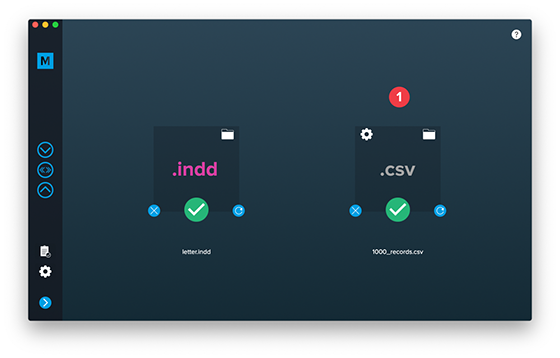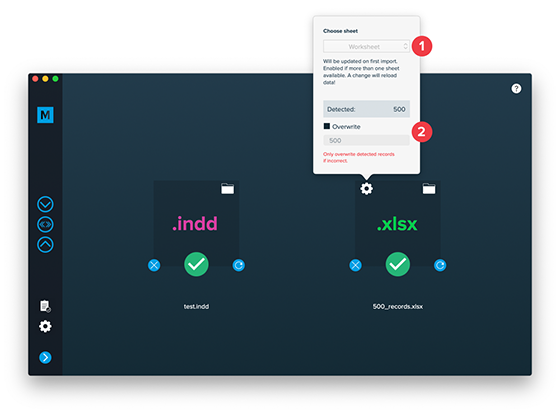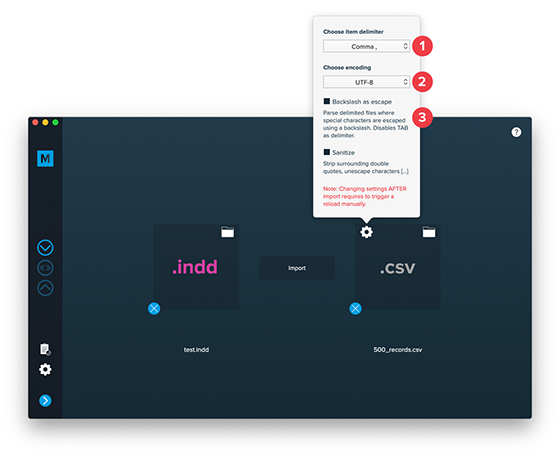Search Knowledge Base
Import data

Import your data file
You can simply import your data file by drag and drop it on the right area. As alternative you can also click the folder icon and select a file from the Finder. Depending on the type of data you’d like to drag into , the icon will either change to the green .xlsx icon for  files or to the grey .csv icon for CSV files.
Microsoft® Excel® import will only be available, if  Microsoft® Excel® software is installed in your system with the required version (or higher).
(How to check detected versions)
.xlsx file
Once you dropped your .xlsx file, a gear icon appears where you can do some settings for import:

1. Select sheet
If your .xlsx file contains more than one sheet (image below), you will be prompted to select the one to import from.
![]() 

MyDataMerge will automatically preselect the current sheet (the one that is selected when you open the document).
2. Overwrite import limit
Usually, the amount of data records should be counted correctly. But sometimes  counts more rows than you actually have filled with data. This is because some cells are filled with space characters or other invisible signs. You don’t see them but Microsoft® Excel®  does and reports more data rows to  than actually needed.
In this case you can overwrite the limit here. Please note that data row 1 contains data titles so entering „10“ here will import data row 2-11.
Note: Old .xls files are not allowed to import due to known issues with tracking file changes. Please just re-save them as .xlsx
.csv file
Once you dropped your .csv file, a gear icon appears where you can do some settings for import:

1. Select separator
Open your .csv file in a text editor and check what character is used to separate your data fields. In the following example, it’s the semicolon:
![]() 

MyDataMerge supports the following separators:
- Semicolon ;
- Comma ,
- Tab
- Vertical bar |
2. Select encoding
While Adobe® InDesign®  can only read UTF-16 encoded files, MyDataMerge supports the following encodings:
- MacOS Roman
- UTF-8 (recommended)
- UTF-16BE
- UTF-16LE
- UTF-32BE
- UTF-32LE
If you are not sure about the encoding of your .csv file it’s recommended to try UTF-8 first (most common case).  MyDataMerge will try the selected encoding on import and tell you if it didn’t work.
Note: The encoding check only works properly if „Allow one column only“ in the App preferences > import is turned off.
3. Additional options
Sanitize
With this option turned off, individual fields will be imported exactly like they are found in the .csv file. If you want these fields to be cleaned (surrounding double quotes stripped, characters unescaped, etc.) you can turn this option on.
Backslash as escape
This option allows you to import files where special characters are escaped with a backslash (the separator, newline etc.)
Replace data
If you already have imported a data file and want to replace it with another data file while keeping your setup, you can just drop the new file on the right area.
Note: When replacing data, it is NOT recommended to change data titles – this might lead to confusing results.